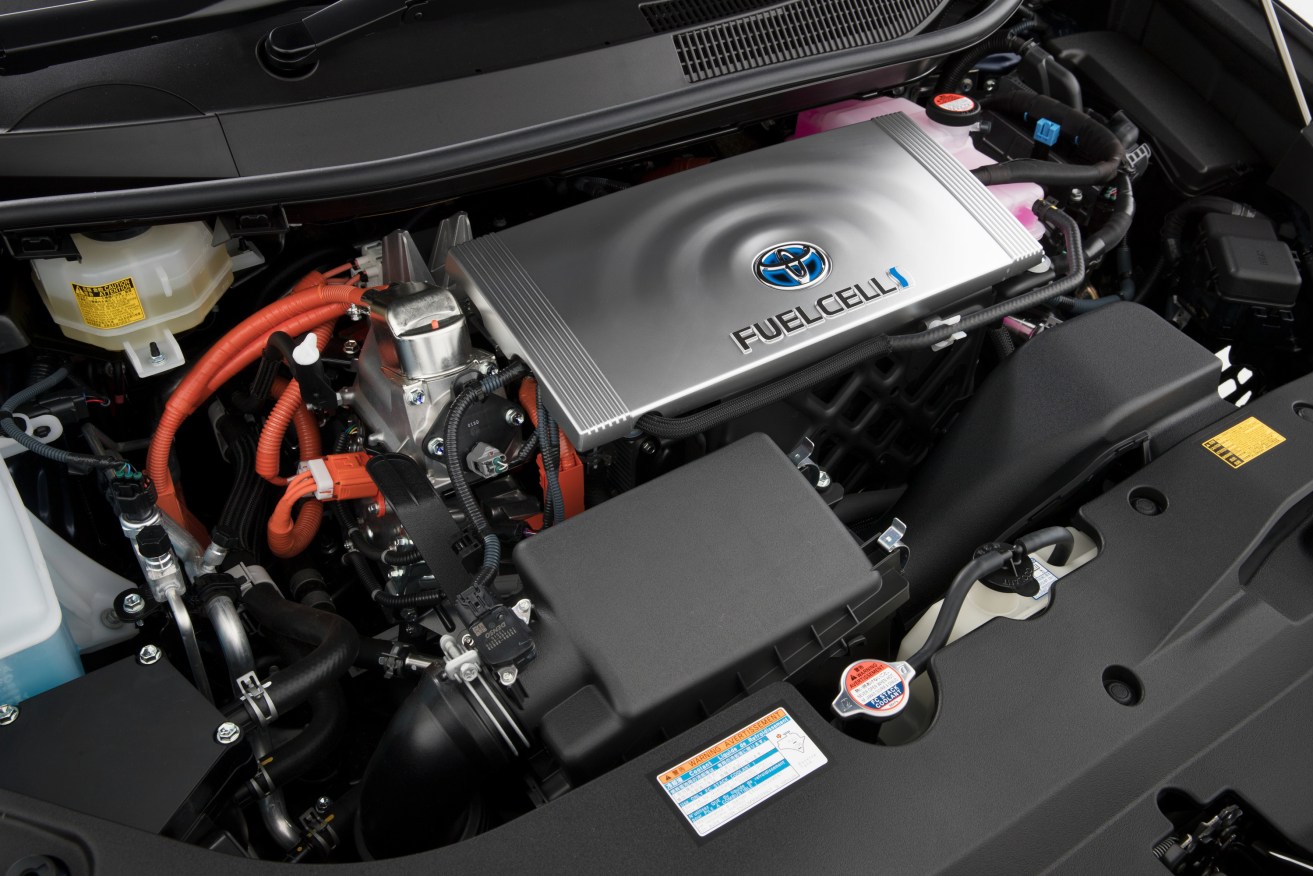Bigger than LNG? SA to get first “green hydrogen” plant
South Australia’s first green hydrogen plant will be built near Port Lincoln, with the hope of opening up an industry that proponents say could eventually surpass the value of Australia’s multi-billion-dollar gas exports.


Under the bonnet of a Toyota Mirai hydrogen fuel cell-powered car. Photo: AAP/Toyota
The plant, to be one of the biggest of its kind in the world, will use energy from Eyre Peninsula renewable energy generators – both wind and solar – to create hydrogen, which will, in turn, be used to power a 10MW hydrogen-fired gas turbine and a 5MW hydrogen fuel cell which will both supply power to the grid.
As the same time, the $117.5 million plant will also produce ammonia as a byproduct, which can be sold to agricultural industries as fertiliser.
Company Hydrogen Utility (H2U) has been given a $4.7 million State Government grant and $7.5 million loan from the State Government’s Renewable Technology Fund to get the project up and running.
The company, which is working with German-based ammonia and hydrogen company thyssenkrupp, hopes the project will demonstrate the commercial and technical viability of the multi-faceted technology.
Hydrogen is an emerging green industry. The plentiful element – the most common in the universe – can be ‘produced’ from renewable sources by using excess green energy to power an electrolysis plant. The process of electrolysis ‘splits’ water into oxygen and hydrogen, the latter of which can be used to generate electricity via fuel cells or turbines.
H2U CEO Dr Attilio Pigneri said the plant would not only provide balancing services to the national grid and fast frequency response for new solar plants under development, but would also be a training ground for professionals in the emerging industry.
“With an initial capacity of 15 MW, the electrolyser plant will be one of the largest green hydrogen production facilities worldwide, and among the first ever commercial facilities to produce distributed ammonia from intermittent renewable resources,” he said.
One of the key issues to be tested at the site is how to get the hydrogen to growing markets in the Asia-Pacific, particularly Japan which is an established user of hydrogen for energy and transport.
“It’s really about market development,” Pigneri told InDaily.
“It’s not just to demonstrate the technology but the viability of this sort of project to the world.
“The end game is obviously to prove the exportability of hydrogen to markets in the Asia Pacific.”
Pigneri believes the industry could be huge – even bigger than Australia’s LNG industry which exported an estimated $23 billion of gas in 2016-17.
He said South Australia was a “very prospective region” for hydrogen because of its high penetration of wind and solar energy and positive policy from the State Government in the form of its “hydrogen road map“.
The export prospects were “huge”.
“It probably, in the long run, will be larger than LNG for export opportunities,” he said.
“Japan has entrenched hydrogen in their long-term energy planning.”
Construction will begin on the plant next year, with Pigneri saying it will become a training ground for green hydrogen professionals.
“We are very lucky to be able to work with local academic institutions, such as the University of Adelaide, and the local energy market regulator, towards the establishment of training programs for certified operators, technicians and professionals that can support the growth of the industry in Australia, including new ‘pathways to employment’ programs for disadvantaged sectors of the local community.”
Energy Minister Tom Koutsantonis said H2U and thyssenkrupp were “at the cutting edge” of hydrogen production and fuel cell technology.
“Hydrogen also offers an opportunity to create a new industry in South Australia where we can export our sun and wind resources to the world,” he said.
The Government believes hydrogen can be the “third arm” of a strategy to better use excess renewable energy production, alongside battery storage and pumped hydro.




